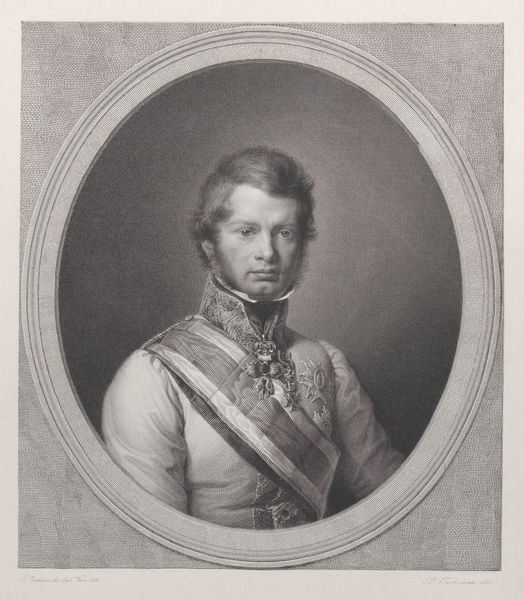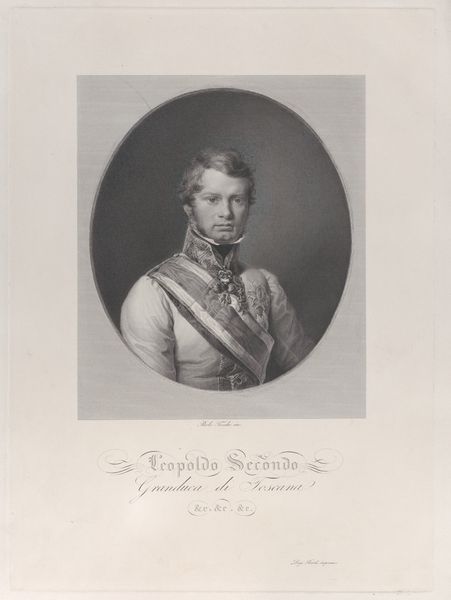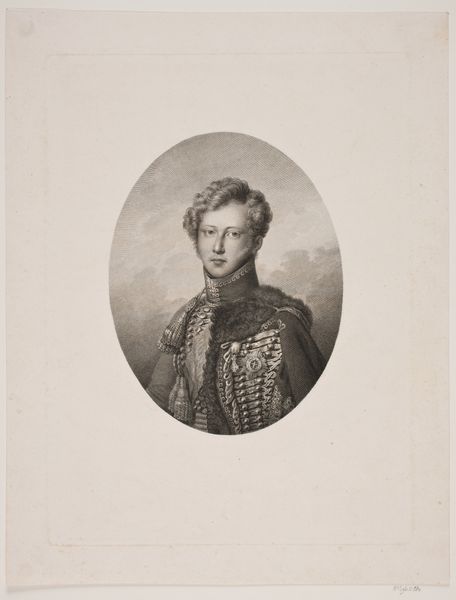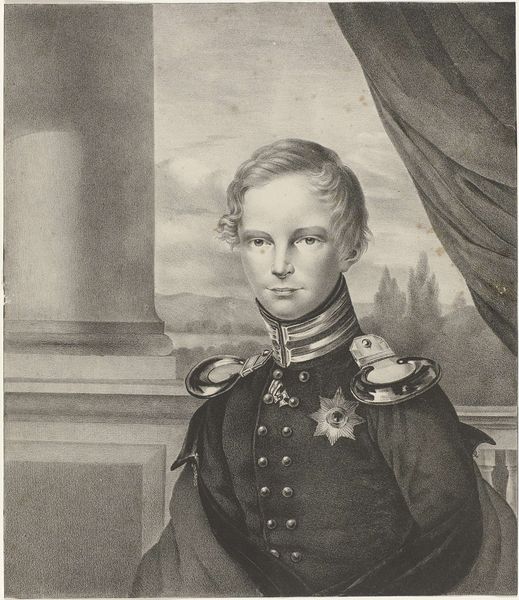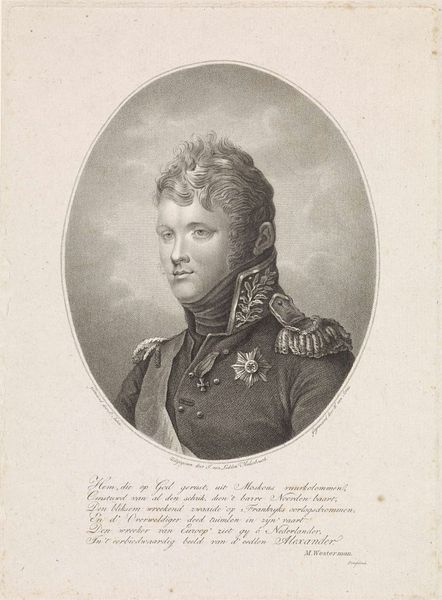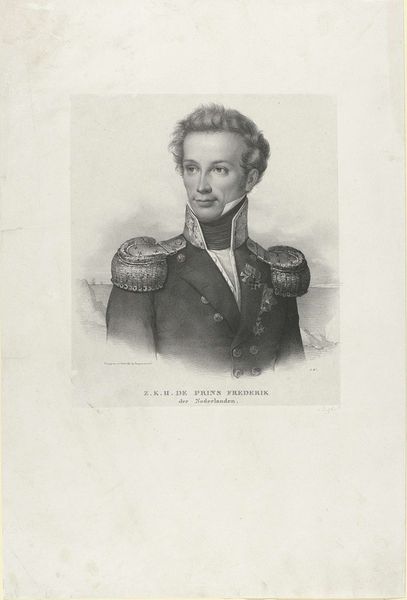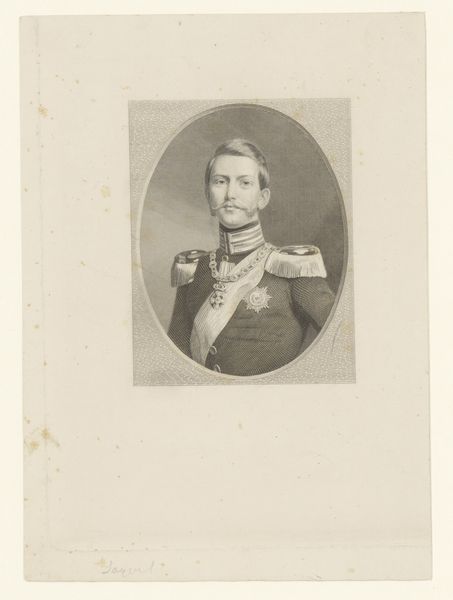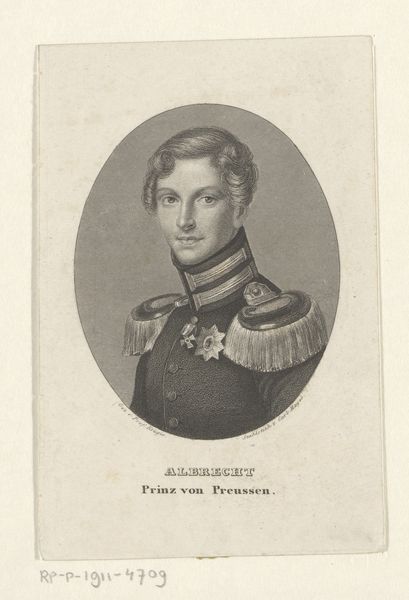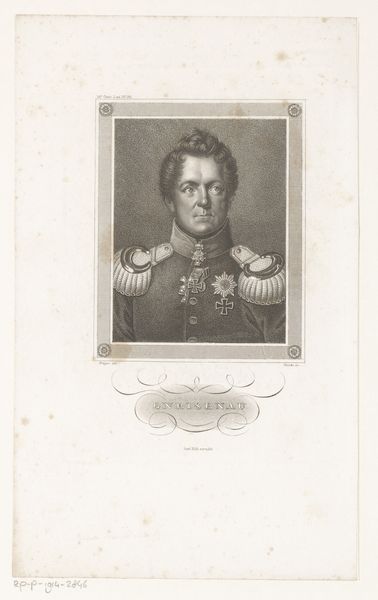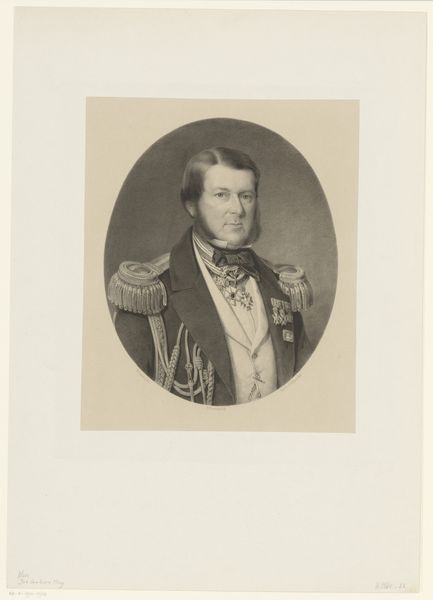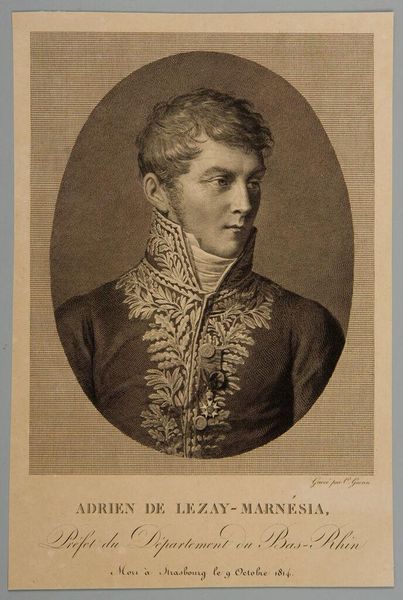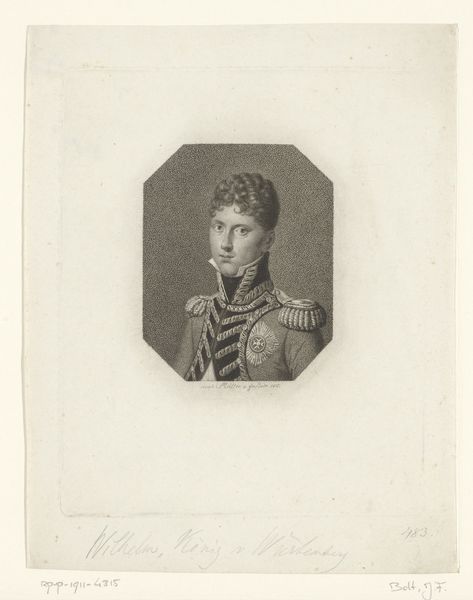
Copyright: CC0 1.0
Editor: Here we have Paolo Toschi's portrait of Leopold II, grand duke of Tuscany. It looks like it was printed in 1834. There’s a stiffness to the pose, a formality that feels very much of its time. What does it tell us about the role of portraiture in shaping public image? Curator: Indeed. Notice the sharp lines, indicative of its reproduction as print. This was a deliberate act of image-making, carefully constructing Leopold's authority. The medals, the sash, the crisp collar—all contribute to the public perception of power. How does this compare to contemporary portraits of nobility? Editor: I suppose modern portraiture is more interested in depicting personality, not just status. I see this as a statement about power more than a depiction of a man. Curator: Precisely. It reflects how political figures strategically used visual representation to solidify their positions within society. Editor: It’s interesting to consider how art like this was used as a political tool. Thanks!
Comments
No comments
Be the first to comment and join the conversation on the ultimate creative platform.
